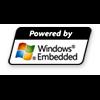Just successfully recover lost partition with the help of The Expert
http://reboot.pro/to...ry/#entry197482
and now i was given a desktop that won't boot all the way.
booted with WinPE to check disk:
PLPPART32 v0.1 20070403 by Elmar Hanlhofer http://www.plop.at Using physical drive 1 Drive geometry: Media Type : FixedMedia Cylinders : 19457 Tracks per Cylinder: 255 Sectors per Track : 63 Bytes per Sector : 512 NR ID BOOT SS SH SC ES EH EC LBAST LBASEC SIZE ------------------------------------------------------------------------------- 1 0x07 *[0x80] 1 1 0 63 254 1023 63 287370657 137.03 GByte 2 0x07 63 254 1023 63 254 1023 287386785 25189920 12.01 GByte 3 0x00 0 0 0 0 0 0 0 0 0.00 MByte 4 0x00 0 0 0 0 0 0 0 0 0.00 MByte
I have tried http://www.cgsecurity.org's TestDisk. Program could not recover partition 1.
Computer brand: hp
some hidden data stored in sectors [1-62] for recovery purpose
attached mbr and partition1 boot sector and backup boot sector















